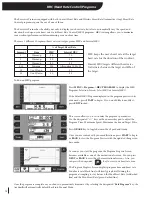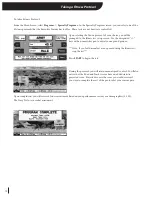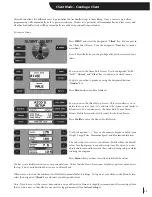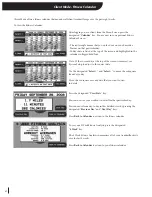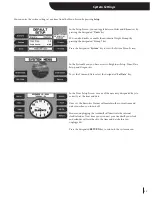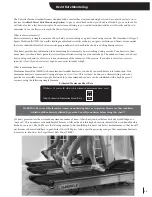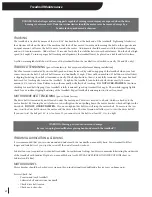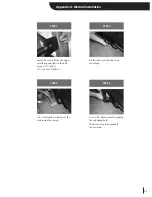
AccuTrack Contact Heart Rate Monitoring System™
27
The AccuTrack Contact Heart Rate Monitoring System™ can be used in place of the wireless chest strap to perform any of
the following functions:
• Monitor your Time in Zone
• Control HRC programs
• Help you maintain your Target Pulse
1.
Use the NEXT button to switch to any screen that shows Pulse (see above).
2.
Grab on to the pulse grips.
3.
As soon as you put your hands on the grips the pulse will flash. This indicates that the system has
been activated.
4.
Pulse will “beat” briefly and then display your heart rate. Your heart rate will be continuously monitored while your
hands remain on the grips.
NOTE: If you are wearing the wireless chest strap, the AccuTrack system will override the wireless signal while your hands
are on the bar. Once you release the AccuTrack bar, the treadmill will then default back to the wireless chest strap signal.
The HRC programs will continue to make speed and elevation adjustments to keep you at your target heart rate while your
hands remain on the grips. If you remove your hands the HRC programs will not make any speed or elevation changes until
you place your hands on the grips again.
The AccuTrack system is designed to be used at walking speeds. A natural running motion involves using your arms to
maintain balance. Since contact heart rate systems require your arms to remain stationary, we recommend using the system
only at speeds of less than approximately 4 mph (6.4 km/h) or the fastest speed at which you are comfortable walking.
GETTING THE MOST OUT OF YOUR WORKOUTS
This depends on several things such as body weight, fitness goals, and what you like to do. Walking is the safest, most
compatible form of exercise for most people. If you’re just starting out, are new to exercise, or participate in aerobic activities
less than three times per week, we recommend that you walk. On the other hand, if you’re an experienced runner, stick with
your program — use your treadmill the way you want.
Here are some considerations to keep in mind:
[1]
If you’re interested in weight control, walking can burn as many calories as a moderate running pace. To get a very
small increase in caloric expenditure, you have to run fast and, for most people, the extra effort isn’t worth it.
[2]
Your chance of losing weight successfully is far greater with walking. Walking increases your daily caloric expendi-
ture, raises your metabolism and is easier to stick with than running.
[3]
Heavy users should always walk until they’ve shed some extra pounds and are closer to their desired body weight.
Extra weight means extra stress on joints and muscles, which in turn means residual muscle soreness.
[4]
If you’re concerned about getting a “tough” workout and don’t think walking is adequate, try walking up a hill!
You can get just as much cardiovascular intensity (heart rate and breathing response) from walking as you can from
running. Don’t fool yourself with preconceived notions about walking — you can sweat just as much by walking
as by running.
Take it easy! Walk. Lose weight in comfort. Avoid being sore and discouraged. After you’ve reached your target weight,
reevaluate. If you like walking and want to stick with it, terrific. On the other hand, if some running is appealing, try it out
and see what it’s like. Just remember that walking will get you fit and keep you fit.
Should you walk or run?

